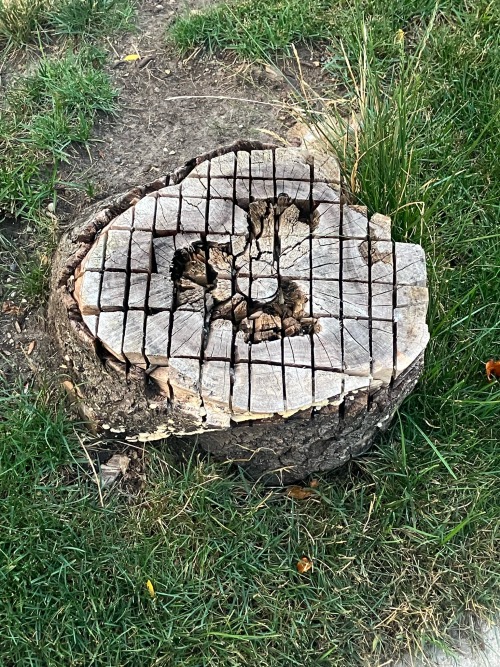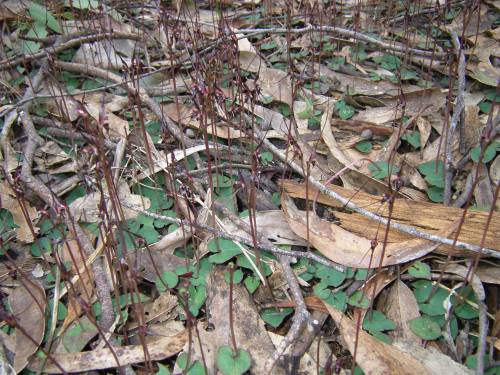Ragwort

Ragwort
More Posts from Calystegia and Others

good god theyre giving the weevils adderall






FINALLY the buttonbush pictures. These are just about the coolest flowers in the world. And they grow all over the riverbanks and are swarmed with pollinators right now it’s amazing. My mom and I couldn’t canoe 10 feet without spotting another one and of course we couldn’t not check out every single one.
Invasive Species and Xenophobia
Invasive species are complicated! People have a lot of feelings about them, positive and negative. Are plants that move "invaders" "colonizing", "immigrants", "citizens"? What does it mean to kill species that are from somewhere else? What if that species legitimately makes a poor neighbor and causes extinctions in other, native species? This complex, culturally-loaded issue is a foundational issue behind a lot of plant conservation and restoration.
This is a juicy and still actively disputed topic! The Guardian recently had a big article on colonialism in Botany, (tbh her views are dated and reductive, imo) and it’s come up again this week, to much hostility (cw: reddit). Yes, my region's native plant restoration came from literal nazis, but also, the impacts of some invasive species are real, not figments of a racist imagination. How do we balance these issues? What does ethical invasive management look like?
Since it’s such a juicy topic, I wanted to offer a few fun readings to share:
The Native Plant Enthusiasm: Ecological Panacea or Xenophobia?, Gert Gröning and Joachim Wolschke-Bulmahn, 2004, Arnoldia.
THE CLASSIC 20th century German nazis and native plants paper. Made a huge splash when it came out, and you will still encounter people who paint all native plant stuff with this brush. Summary: yeah the nazis loved their native plants and used them as part of their conquering process. Also, the first prairie plantings ever, located in Chicago, were done by a racist probable-nazi for racist reasons, full stop. I’ll let him speak for himself: “The gardens that I created myself shall… be in harmony with their landscape environment and the racial characteristics of its inhabitants. They shall express the spirit of America and therefore shall be free of foreign character as far as possible… the Latin and the Oriental crept and creeps more and more over our land, coming from the South, which is settled by Latin people, and also from other centers of mixed masses of immigrants. The Germanic character of our race, of our cities and settlements was overgrown by foreign character. The Latin spirit has spoiled a lot and still spoils things every day.” - Jens Jensen
Botanical decolonization: rethinking native plants, Tomaz Mastnak, 2014, Environment and Planning D: Society and Space
Rather than viewing native plant plantings as an act of racially-pure occupation, Mastnak positions native plants in California as a decolonization of the sub/urban lawn. Uses a lot of quotations from 16th century English philosopher Francis Bacon, and is heavy on the philosophical musings.
From killing lists to healthy country: Aboriginal approaches to weed control in the Kimberley, Western Australia by Bach et al., 2019, Journal of Environmental Management.
This paper talks through some of the native vs invasive debate, and offers a different perspective on how to approach to plant invasive management based on cultural relations, rather than country of origin or behavior.
Beyond ‘Native V. Alien’: Critiques of the Native/alien Paradigm in the Anthropocene, and Their Implications, Charles R. Warren, 2021, Ethics, Policy, & Environment
DENSE but thorough, if you want to follow the entire history of the native/invasive debate, this has you covered. The most interesting stuff, in my opinion, is the discussion of invasive denialism, IE: the impasse of “You’re just being racist!” Vs “You know nothing about ecology!” I recommend the Discussion, which starts on page 13.


Acianthus caudatus.
Orchidaceae: Diurideae.
By Start with the Leaves. [x]

Mystical Rock Lotus
An extraordinary plant with delicate pink blossoms emerging from rugged rocks, supported by intricate and vibrant pink roots that cascade down the stone surfaces, creating a mesmerizing display of natures resilience and beauty!
Light: Partial to full sunlight.
Water: Mist regularly to maintain moisture around the roots.
Soil: Requires minimal substrate, often growing directly on rocks.
Temp: 60-75F 16-24C.
Humidity: High humidity is essential.
Fertilizer: Rarely needed; thrives in natural, nutrient-rich environments.
This plant is perfect for creating a unique and captivating focal point in rock gardens or terrariums!
source: Coffee loves
-
 gatorade-brand-deodorant reblogged this · 2 months ago
gatorade-brand-deodorant reblogged this · 2 months ago -
 themailboxknight reblogged this · 3 months ago
themailboxknight reblogged this · 3 months ago -
 calystegia reblogged this · 3 months ago
calystegia reblogged this · 3 months ago -
 all-about-thebees reblogged this · 3 months ago
all-about-thebees reblogged this · 3 months ago -
 transmandrake reblogged this · 3 months ago
transmandrake reblogged this · 3 months ago -
 stillcantgetoverthesilmarillion liked this · 3 months ago
stillcantgetoverthesilmarillion liked this · 3 months ago -
 6skies reblogged this · 4 months ago
6skies reblogged this · 4 months ago -
 flutteringflowers liked this · 4 months ago
flutteringflowers liked this · 4 months ago -
 darwinisbae reblogged this · 4 months ago
darwinisbae reblogged this · 4 months ago -
 saturnian-chaos-entity liked this · 4 months ago
saturnian-chaos-entity liked this · 4 months ago -
 someropeandflextape liked this · 4 months ago
someropeandflextape liked this · 4 months ago -
 soupwillsaveyou reblogged this · 4 months ago
soupwillsaveyou reblogged this · 4 months ago -
 kittyofinsanity liked this · 4 months ago
kittyofinsanity liked this · 4 months ago -
 photospl liked this · 4 months ago
photospl liked this · 4 months ago -
 0273witch reblogged this · 4 months ago
0273witch reblogged this · 4 months ago -
 0273witch liked this · 4 months ago
0273witch liked this · 4 months ago -
 impalaparkedat221b reblogged this · 4 months ago
impalaparkedat221b reblogged this · 4 months ago -
 impalaparkedat221b liked this · 4 months ago
impalaparkedat221b liked this · 4 months ago -
 therosefromyesterday liked this · 4 months ago
therosefromyesterday liked this · 4 months ago -
 woodlandery liked this · 4 months ago
woodlandery liked this · 4 months ago -
 rad-rat-with-a-tophat reblogged this · 4 months ago
rad-rat-with-a-tophat reblogged this · 4 months ago -
 rad-rat-with-a-tophat liked this · 4 months ago
rad-rat-with-a-tophat liked this · 4 months ago -
 xxenobiology liked this · 4 months ago
xxenobiology liked this · 4 months ago -
 puffles liked this · 4 months ago
puffles liked this · 4 months ago -
 asgardian--angels liked this · 4 months ago
asgardian--angels liked this · 4 months ago -
 techt00n reblogged this · 4 months ago
techt00n reblogged this · 4 months ago -
 juice-type-r reblogged this · 4 months ago
juice-type-r reblogged this · 4 months ago -
 juice-type-r liked this · 4 months ago
juice-type-r liked this · 4 months ago -
 hawkpartys reblogged this · 4 months ago
hawkpartys reblogged this · 4 months ago -
 rewild reblogged this · 4 months ago
rewild reblogged this · 4 months ago -
 fullygreatunknown liked this · 4 months ago
fullygreatunknown liked this · 4 months ago -
 qiisevil reblogged this · 4 months ago
qiisevil reblogged this · 4 months ago -
 qiisevil liked this · 4 months ago
qiisevil liked this · 4 months ago -
 jigglywigglysirenputty liked this · 4 months ago
jigglywigglysirenputty liked this · 4 months ago -
 aneides-vagrans liked this · 4 months ago
aneides-vagrans liked this · 4 months ago -
 anti-gravity-insanity liked this · 4 months ago
anti-gravity-insanity liked this · 4 months ago -
 scribblingface liked this · 4 months ago
scribblingface liked this · 4 months ago -
 majormajesty liked this · 4 months ago
majormajesty liked this · 4 months ago -
 the-king-of-lemons liked this · 4 months ago
the-king-of-lemons liked this · 4 months ago -
 necromancersdoitbetter liked this · 4 months ago
necromancersdoitbetter liked this · 4 months ago -
 radical-aurin-care liked this · 4 months ago
radical-aurin-care liked this · 4 months ago -
 what-a-strange-thing reblogged this · 4 months ago
what-a-strange-thing reblogged this · 4 months ago -
 what-a-strange-thing liked this · 4 months ago
what-a-strange-thing liked this · 4 months ago -
 khajit-has-wares-but-not-that liked this · 4 months ago
khajit-has-wares-but-not-that liked this · 4 months ago -
 pie-shenanigans liked this · 4 months ago
pie-shenanigans liked this · 4 months ago -
 tardisfireworks liked this · 4 months ago
tardisfireworks liked this · 4 months ago -
 chaosbluebird reblogged this · 4 months ago
chaosbluebird reblogged this · 4 months ago

icon: Cressida Campbell"I know the human being and fish can co-exist peacefully."
35 posts









